Since the beginning of the new year, the weather hasn’t been that cooperative in regard to photography opportunities. We have been experiencing a lot of days filled with clouds, instead of ample sunshine. The birds haven’t seemed to mind though and I have had a wonderful time viewing a few new visitors, as well as a few familiar faces. As for the birds visiting the feeders, I have observed fewer bird visitors since the end of this past summer. I keep my feeders well stocked with a variety of seed, Nyjer, and suet and I don’t believe my account for fewer birds is all of my doing. I recently read that bird feeder visits account for only about twenty percent of a bird’s diet. Also, birds usually have a daily routine of visiting other nearby feeders, as well as obtaining other natural food sources such as berries, fruits, nuts, grasses, plant material, and insects. Another contributing factor for my observing fewer birds at my feeders may be due to how mild this winter has been so far. Many of these natural food sources are still in abundance, because they are not covered under snow and ice. The birds are also not expending as much energy to maintain their body temperatures and as a result, consuming fewer calories. After reading this information, I don’t feel so bad, but I have been looking into no-mess blend seeds with more peanuts and safflower seeds to attract more birds this winter. I’m hoping to at least pique their interest at the feeders and I will be ready for when the next big snowstorm arrives. For the spring, I also have plans to plant a variety of berry bushes, in the hopes of attracting a much wider variety of migratory birds.
Anyway, I have also made an observation of fewer species of birds in general. By the late summer and fall of last year, I observed fewer birds at my feeders and in the backyard. I didn’t see any fall migratory birds such as the many warblers I usually get in October. It seems this may become a trend for seasons to come, but I hope I am incorrect. By now, I would have seen my usual pair of red-breasted nuthatches (Sitta canadensis) and several tufted titmice (Baeolophus bicolor), in addition to my usual bird crew. The number of American goldfinches (Sitta canadensis) has increased from one to about ten within a couple of days, so that has been a plus. As of the new year, I now have steady flocks of black-capped chickadees (Poecile atricapillus), dark-eyed juncos (Junco hyemalis), mourning doves (Zenaida macroura) and blue jays (Cyanocitta cristata). I also have visiting pairs of hairy woodpeckers (Leuconotopicus villosus), downy woodpeckers (Picoides pubescens) and white-breasted nuthatches (Sitta carolinensis).
Depending on the quality of lighting, I have been taking daily photographs of a few of my bird visitors. I feel my best photographs of birds are taken on sunny days. Good lighting is essential for capturing crisp details and features such as the eyes of birds. Many species of birds have a natural coloring that can hide the details of their eyes. A perfect example of this can be found in the black-capped chickadee. Their eyes can be well hidden by their cute little black caps and without proper lighting, their eyes seem to become muted in their coloring. I wanted to share a few of what I think have been my best photographs so far this year and I hope you enjoy.
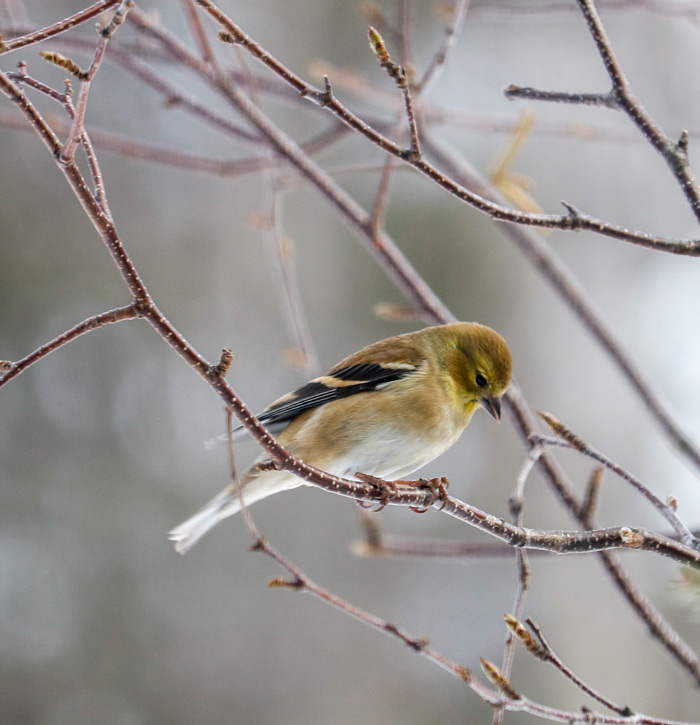
American goldfinch (f/6.3, 1/250 sec., ISO 500)
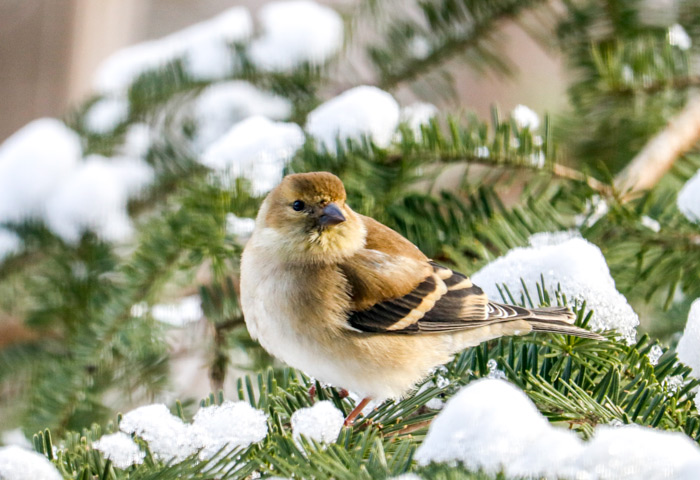
American goldfinch (f/6.3, 1/250 sec., ISO 500)
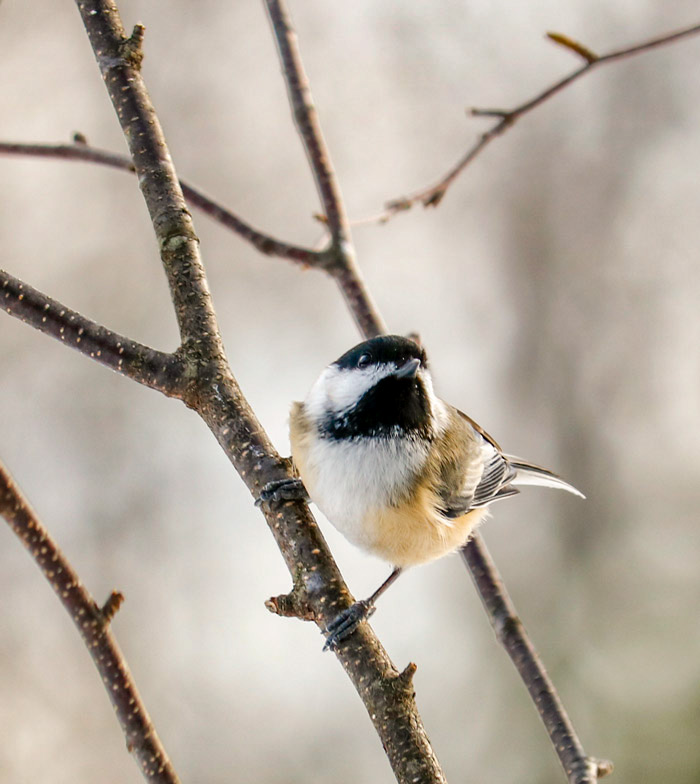
Black-capped chickadee (f/6.3, 1/250 sec., ISO 160)
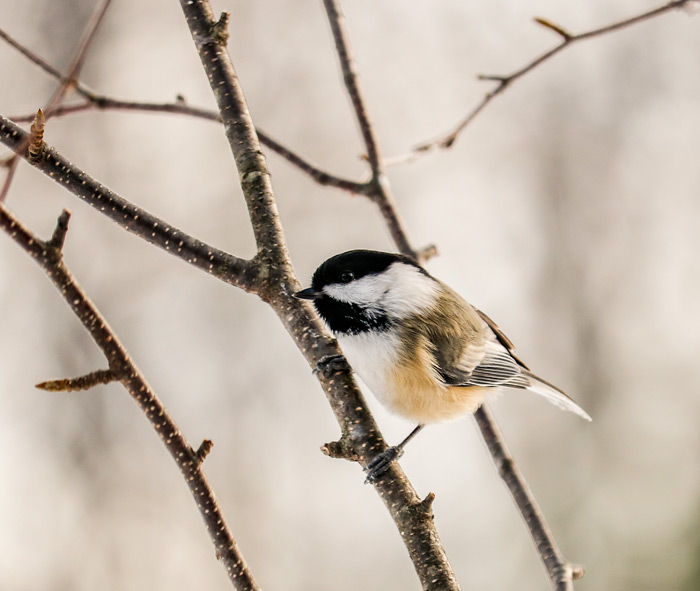
Black-capped chickadee (f/5.6, 1/250 sec., ISO 160)

Black-capped chickadee (f/5.6, 1/250 sec., ISO 250)

Black-capped chickadee (f/5.6, 1/250 sec., ISO 320)
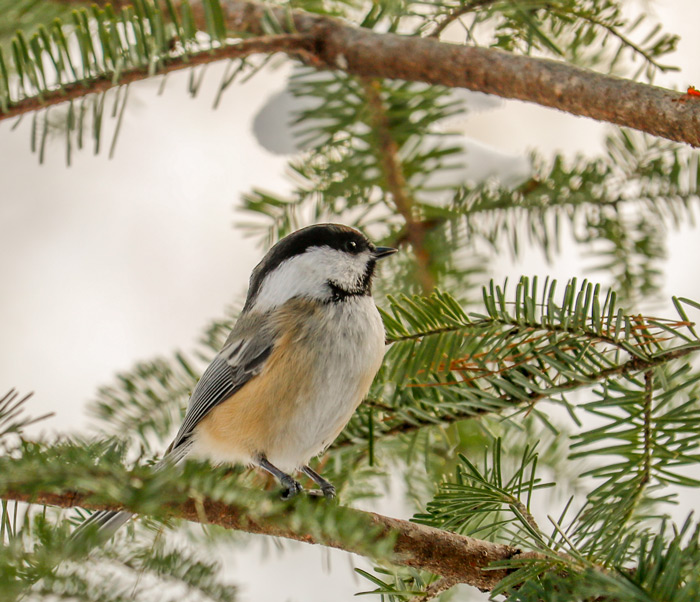
Black-capped chickadee (f/5.6, 1/250 sec., ISO 125)
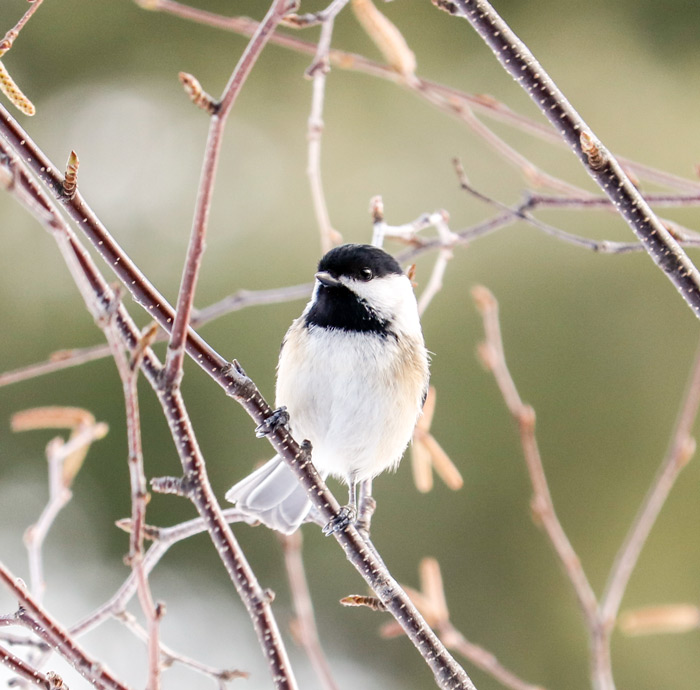
Black-capped chickadee (f/5.6, 1/250 sec., ISO 320)
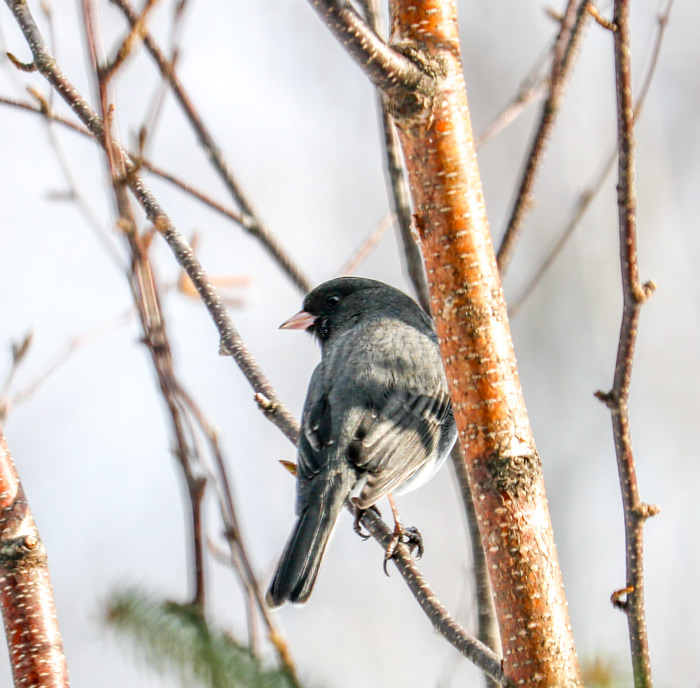
Dark-eyed junco (f/6.3, 1/250 sec., ISO 125)
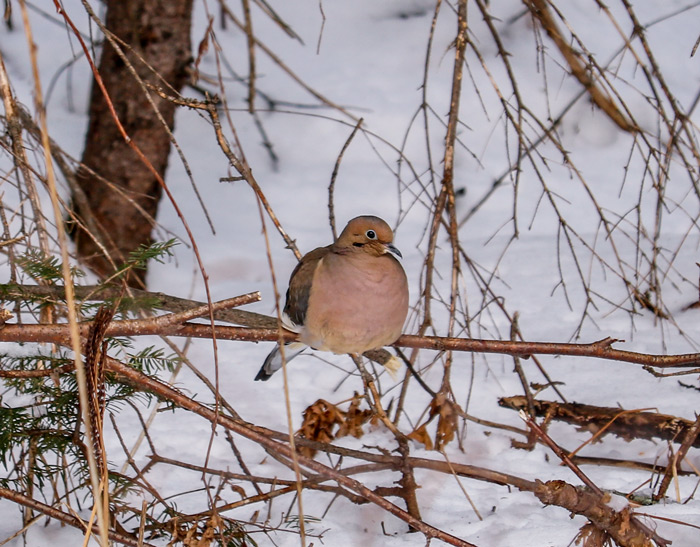
Mourning dove (f/5.6, 1/250 sec., ISO 125)
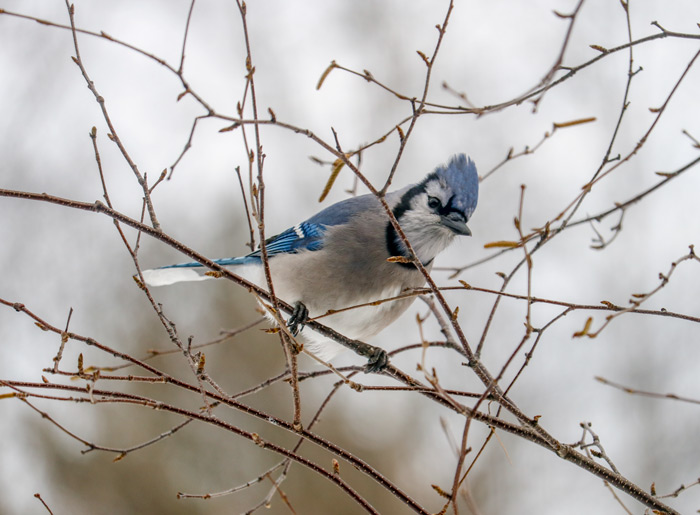
Blue jay (f/5.6, 1/250 sec., ISO 160)
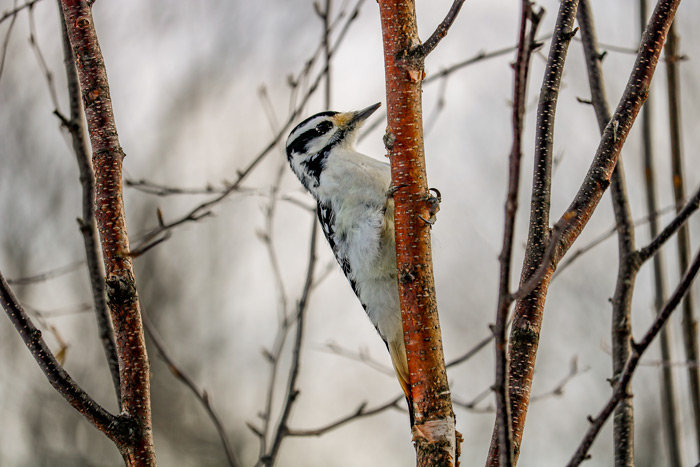
Hairy woodpecker (f/6.3, 1/250 sec., ISO 100)
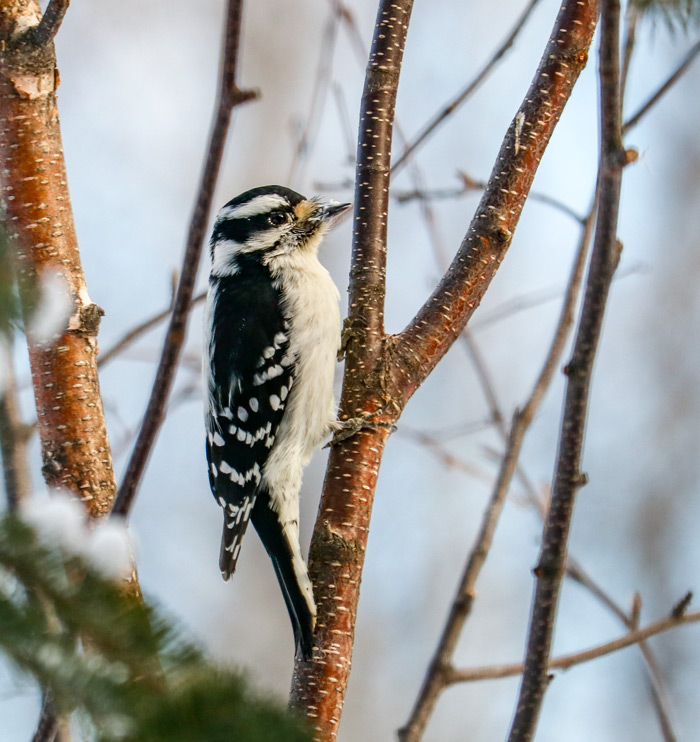
Downy woodpecker (f/6.3, 1/250 sec., ISO 400)
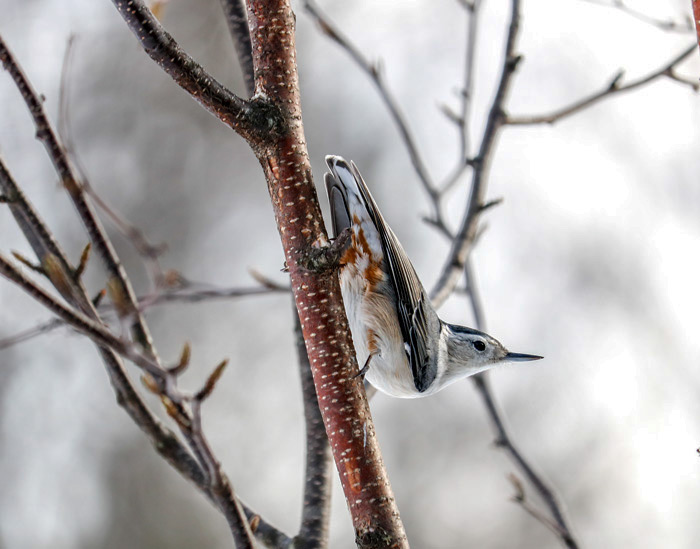
White-breasted nuthatch (f/5..6, 1/250 sec., ISO 160)
I am hoping with the addition of new bird food and the spreading of this fantastic news between my bird visitors and their buddies, I will have a few new faces at the feeders. If this isn’t the case, I don’t mind the time spent observing and photographing familiar faces. Then again, there are always plenty of future spring projects for attracting new bird species. Now, if the weather would only cooperate; that would be nice for a change. I wish everyone a Happy New Year and best of all, Happy Birding!
Leave a Reply